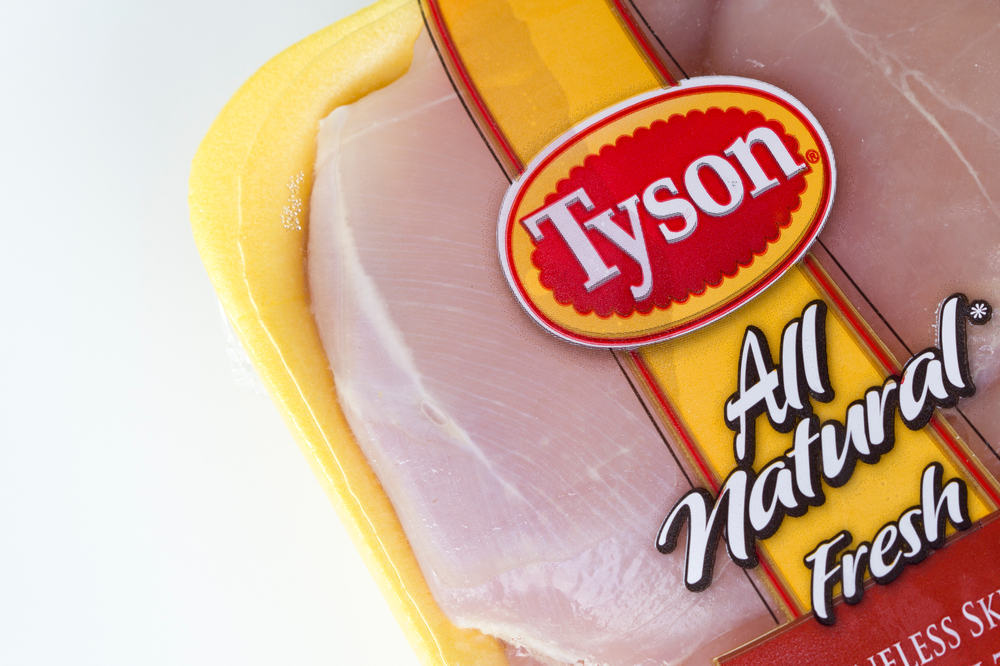This Dividend Stock Says It’s ‘Prepared’ for Trump’s Tariffs. Is It a Buy Now?

Tyson Foods (TSN), one of the biggest meat producers in the U.S., is at a critical juncture as global trade tensions and changing consumer habits shake up the protein industry. President Donald Trump’s recent tariffs, including a 25% tax on imports from Canada and Mexico, have raised concerns across the food sector. With Canada and Mexico making up nearly 40% of U.S. pork exports, retaliatory measures from these countries could have a big impact. Although these tariffs have been delayed by at least 30 days, investors are closely watching the impacts they could have on the stock market. One company, Tyson, says it’s ready to handle these challenges.
In its latest earnings call, the company stressed its ability to manage the effects of tariffs by focusing on finding “the best markets for its products.” This confidence follows strong financial results and was reflected in a 2% rise in its stock price on Feb. 3.
Its dividend yield of 3.51%, much higher than the 1.89% average for consumer staples stocks, shows its commitment to rewarding shareholders. With solid financials and proactive strategies in place, it begs the question: Is Tyson Foods a buy now? Let’s take a closer look.
Tyson’s Financial Performance
Tyson Foods (TSN), a global leader in meat production, runs a diverse business that includes chicken, beef, pork, and prepared foods. Its wide range of protein products and strong supply chain make it a major player in meeting the world’s growing demand for protein — an important edge as it deals with tariff threats.
Over the past year, Tyson’s stock has stayed fairly steady, falling just 1.13%. So far this year, the stock is down 1.03%, but recent movements show some strength.
The company posted strong results for its fiscal first quarter of 2025, marking its third straight quarter of year-over-year growth. Sales rose 2.3% to $13.62 billion, and GAAP operating income shot up 151% to $580 million. Adjusted EPS climbed 65% to $1.14.
However, free cash flow dropped $186 million to $760 million due to higher expenses. CEO Donnie King highlighted Tyson’s proactive approach to handling potential disruptions by using its global expertise to find new markets for its products while benefiting from steady consumer demand for protein.
Tyson trades at a forward P/E ratio of 15.26x, slightly below the industry average of 16.05x, suggesting it may offer good value. Its PEG ratio of 0.85x also points to solid growth potential at a reasonable price — making it an interesting choice for investors looking for value amid tariff uncertainties.
The Growth Drivers Powering Tyson’s Preparedness
Tyson Foods has shown it’s ready to handle tariff challenges by relying on its strong business and diverse operations. During the latest earnings call, its CEO highlighted that the company delivered its “best quarterly performance in more than two years,” thanks to solid results in its chicken segment and better overall execution. With more people focusing on protein-rich diets, Tyson’s broad range of products puts it in a good position to meet this demand.
Tyson’s dividend also makes it appealing for income-focused investors. The company offers a 3.51% forward dividend yield, much higher than the consumer staples average of 1.89%. Its annual dividend of $2.00 per share is supported by a payout ratio of 49.76%, leaving room for reinvestment and growth.
Tyson has raised its dividend for 14 straight years, showing its commitment to rewarding shareholders.
Analyst Ratings and Tyson’s Path Forward
Even with the potential challenges from Trump’s tariffs, the company has raised its fiscal 2025 adjusted operating income forecast to between $1.9 billion and $2.3 billion. Revenue is expected to stay flat or grow by up to 1%, showing steady demand for its protein products.
Chicken continues to lead the way, with expected adjusted operating income of $1 billion to $1.3 billion, while prepared foods are projected to bring in $0.9 billion to $1.1 billion. Tyson also expects its international operations to improve, expanding its global reach.
Analysts have a cautiously optimistic stance on Tyson. Out of nine analysts, two rate the stock a “Strong Buy,” six recommend a “Hold,” and one suggests a “Strong Sell,” giving it an overall “Moderate Buy” rating.
The average price target is $63.30 represents 11% upside from the current price as of Feb. 5. Its Street-high target of $75 implies more than 30% upside potential. Institutional investors seem confident in Tyson’s strategy too, with institutional ownership now at 67%. This strong backing adds weight to Tyson’s claim that it’s ready to handle any tariff-related impacts.
Conclusion
Tyson Foods has demonstrated that it is not only facing challenges such as tariffs but is also actively positioning itself for success through strong fundamentals, operational improvements, and a dependable history of dividends. Its resilience and consistent growth drivers make it an appealing choice for investors seeking a balance of income and long-term potential.
On the date of publication, Ebube Jones did not have (either directly or indirectly) positions in any of the securities mentioned in this article. All information and data in this article is solely for informational purposes. For more information please view the Barchart Disclosure Policy here.